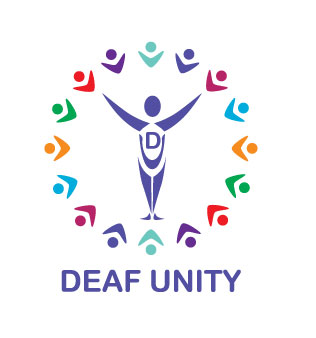With the world going ‘virtual’ over the last few years, access barriers have changed and morphed, with some improvements and some unique challenges emerging. One area that has seen greater visibility is sign language interpretation: either the increased provision (access – yay) or the disappointing absence (as with the WhereIsTheInterpreter Campaign). We asked one of our interpreter friends to give us an insight into ‘a day in their life’. Enjoy!
The night before
It’s Sunday evening and I know I have a full-day’s work tomorrow with one of my regular clients. It is nice to work with the same deaf professionals regularly as it means I have a good understanding of their organisation and their role, and can anticipate what kind of challenges may come up. It also means they can have more trust in my ability to do the job, as we have worked together many times, so that allows them to focus on what they need to do, without worrying about me.
Tomorrow is going to start with a meeting at 09:00 with my client’s project team. I haven’t worked with the client since early last week, so I need to make sure I am fully up-to-date with everything. He sent me through the latest project report and highlighted the areas that he will be speaking on, so I take this time to just run through and make sure I am confident with the content and the project management ‘lingo’ that is going to be involved. There are lots of professional terms that do not have a ‘formal sign’ in BSL, so my client has developed his own set of signs to cover things like ‘Agile’, ‘Sprint’ and ‘Scrum’. Once again, it helps to know him well and what signs he will use when I am interpreting from BSL into English so it can all be as seamless as possible.
With my prep done, I can rest for the evening and be ready for the morning.

The day begins
I start work at 9am, so I begin setting up around 8:30am. This involves resetting my router in case it blipped during the night, putting the kettle on for that much needed coffee and setting up my lights and making sure everything looks good on camera. With everything going remote, having a good set up is paramount. It has taken a lot of investment and tweaking over the last two years to make sure that what people see is the best I can give. I have a high quality camera, two screens to clearly view all participants and reference material, a green background that gives contrast without distractions and spotlights to ensure I can be clearly seen with even lighting that doesn’t change through the day. It’s a lot!
I also take this time to check in with my co-worker. For meetings over one-hour, we ask for two interpreters to be booked so we can work together and ensure quality interpreting for the duration of the meeting. This meeting is going to be two hours, which I wouldn’t be able to cope with alone: they say that the quality of interpretation begins to diminish after 20 minutes, and after 45 you are looking at cognitive burnout. Having two of us, we can swap over every 15-20 minutes and move from ‘active’ to ‘supporting’, where you are watching for anything missed or incorrect but you don’t have the full load of having to interpret the message. We agree the points at which we will swap over, make sure we are good with the content and cover anything else we need, to make sure we are happy to perform at our best in the meeting.
I log in at 8:50am on the Zoom link provided, and we make sure everything is set up correctly. I ask the host of the meeting to grant us co-host status, as this allows us to message using the chat function, pin multiple participants such as my co-worker and client, and make any changes that I need without asking the host once the meeting begins.
Wow, that was heavy! My brain feels like it is going to pop! My co-worker is signing off as she was only booked for this meeting, so it’s just me for the rest of the day. My client and I quickly meet to debrief on the meeting and make sure any of his action points are clear. Once this is done, we agree to have a 20-minutes break to decompress and have a stretch!

My client let’s me know that he doesn’t have any more meetings before lunch, but he does need to send some emails regarding a report that has come in, in the afternoon. So he asks me to spend the rest of the time before lunch reading through the report so that I can translate relevant sections into BSL for him after lunch. I appreciate this time ‘off-camera’ and away from the computer screen, so I open it on my iPad and sit in the garden for a bit to get some sunshine.
The afternoon
After lunch, we meet on Zoom to talk about the report. My client needs to follow up on a few points and ask for feedback from his team, so we use Google Documents to write the emails. He signs to me in BSL what he wants to say and I translate them into English, which he can see in real-time in the shared document. Although my client is a high-level professional and has multiple degrees, English is not his first language and so prefers to sign in BSL and have it translated. Many deaf professionals do this, but for some reason it is something that many do not like to talk about. There is a lot of unfair stigma around ‘English proficiency’ and deaf people especially can feel judged if their English is not ‘perfect’. I don’t think anyone’s English is perfect, and we should all be a little more understanding whether someone is deaf, from another country or whatever the reason is.
At 2:30pm my client’s line manager sends him a message on Teams that he wants to meet now. This is unexpected, and neither of us know the content or how long the meeting might go. Although we have requests like having prep-material ahead of time, or having two interpreters if it goes over an hour, it is impossible to stick to that at all times. We need to be ready to be flexible to support our clients in their roles, and that means being ready to jump into meetings and do our best. I grab my Zoom shirt (hahah) and click the link my client sent me through my email.
This meeting is in Teams and immediately we face issues. For some reason, my client’s camera isn’t showing his image. Throughout the pandemic, many organisations chose to use Teams for meetings as it was perceived as more secure. Despite having superior captioning and file management features, it is just a nightmare for sign language interpretation. You can’t move the video boxes around, pinning is clunky and it often has poor clarity on videos especially when sharing, which is kinda important for sign language interpreting.
We give up and suggest moving to Zoom. That was much better and we could all see each other and the shared documents more easily. The meeting lasted 45 minutes, so I definitely need a break after that.
I use my break time to check social media and the interpreting groups I am a member of online. It’s nice to see what is going on with other colleagues and what good practice is shared, or what problems are being faced in different areas. There is a lot of discussion about self-help, which I make a note of to look into as I am feeling like I have lost my work-life balance a little bit of late.
Right, back to the report and the emails we were working on. One of the points needs clarifying immediately so my client asks me to make a phone call. We have found that it is useful for him to tell me what he wants to know so when I make the call, I can ad-lib a little rather than signing everything. Telephone interpreting is so different to face-to-face where you don’t have natural cues for turn-taking or where the hearing person can see the deaf person signing and will wait before speaking. On the telephone there are lots of awkward pauses or interrupting each other when a pause is too long. We have found a blend of interpreting and ‘free-range’ to add little markers like, ’so…’ or ‘ah yes…’ to indicate that my client is going to speak, even though he hasn’t signed anything yet.

After that, my client asks me to be around if he needs me, but he will focus on sending out his emails and do some admin.
End of the day
The day closes off by deleting all the documents that were sent to me today, ensuring confidentiality is maintained and saying goodbye to my client. After a short break, I sit down to go through the materials for a conference I am working at on Zoom, and it all begins again. The last thing I do most days is check on the Association of Sign Language Interpreters website for any CPD opportunities coming up, and also check my accounting software to see if any invoices are late or need to be sent.
Ready for tomorrow!
Planning on interpreting online or using Zoom? Take a look at our tips for using BSL interpreters on Zoom here.
Do you need to book an interpreter? Read our 5 Tips for Working with a BSL Interpreter
If you would like to write for Deaf Unity and share your journey, your personal experience of deafness or learning in education or employment, get in touch!
Looking for more support? We’ve made it our mission to improve the lives of deaf people everywhere. Check out Deaf Unity’s projects to find out what we can do for you. If you’d like to get in touch, contact us here.

